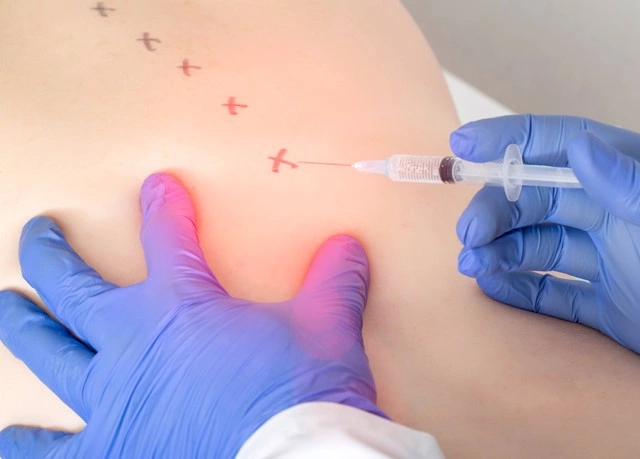
- Deutsch
- English
- 中文


Neural therapy is an alternative and low-risk healing method. This stimulation, regulation, and resetting therapy uses injections of a local anesthetic (procaine) to treat chronic and acute conditions. The anesthetic is injected into muscle and nerve structures, blood vessels, ganglia (nerve nodes), or directly into interference fields.
The effect is not only due to the anesthetic action of procaine but also to the stimulus it provides, which can trigger the body’s self-regulating mechanisms. Neural therapy may improve circulation, relieve pain, reintegrate decoupled regulatory circuits, deactivate interference fields in the autonomic nervous system, or produce anti-inflammatory effects.
As a regulatory therapy, neural therapy can be applied in a broad range of root-cause treatments.
In segment therapy, a detailed medical history is used to localize the affected segment of the body where the pain occurs. Each segment is linked to a specific area of the skin, muscles, connective tissue, blood vessels, and bones/joints—connected to a spinal cord segment through a corresponding nerve. This spinal segment is also linked to an internal organ. The injection is administered to this area, where it can also positively affect the corresponding organ and relieve pain.
In interference field therapy, the anesthetic is injected into the previously identified interference field. These may include scars, past inflammations, tonsils or tonsil scars, root-treated teeth, or often the sinuses. About 80% of interference fields are located in the head and neck region, about 10% in the lower abdomen/gynecological area. These disturbed areas send signals through the autonomic nervous system to other body regions and can cause or sustain symptoms far from the original site.
Interference fields can tie up and drain immune power. Neural therapy helps resolve these blockages so that the immune system can recover and function properly again.
January 27, 2022